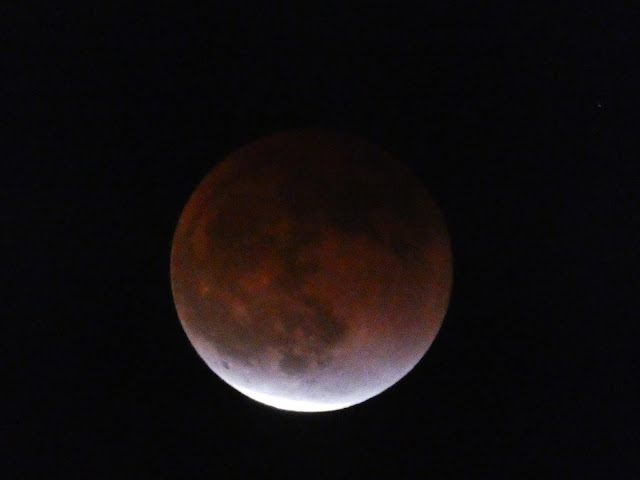Out here in California the eclipse was already underway at sunset, and most of the Moon was already in the Earth's shadow. It was kind of strange to see a "crescent" Moon rising in the east as the sun set in the west.
The red of the Blood Moon became visible, and then I had a bit of a surprise. It is hard to see stars in the immediate vicinity of the full moon because it is so bright. But if you look in the picture below, look at the 10:30 position of the disk, and there is a star emerging from behind the Moon! I've never seen this happen before.
A few moments more, and the moon had moved away from the star, and several others were visible as welll.
It wasn't easy holding the camera still enough to catch the stars as well. I guess I should just use a tripod, but what's life without challenges? I only deleted 30 or 40 shaky shots...This was an unusually long period of totality for a lunar eclipse. After around an hour, the bottom edge of the Moon began to glow brighter as the orb moved closer to the edge of the Earth's shadow.
And then just like that the Sun began to shine on the lunar surface again. The red disk disappeared and the stars dimmed and disappeared once again.And then it was over, and our bright full Moon had returned. And that is how it was! Thanks to our friends Jeanne and Barry for a nice evening with a porch overlooking the Tuolumne River and a perfect moonrise!















